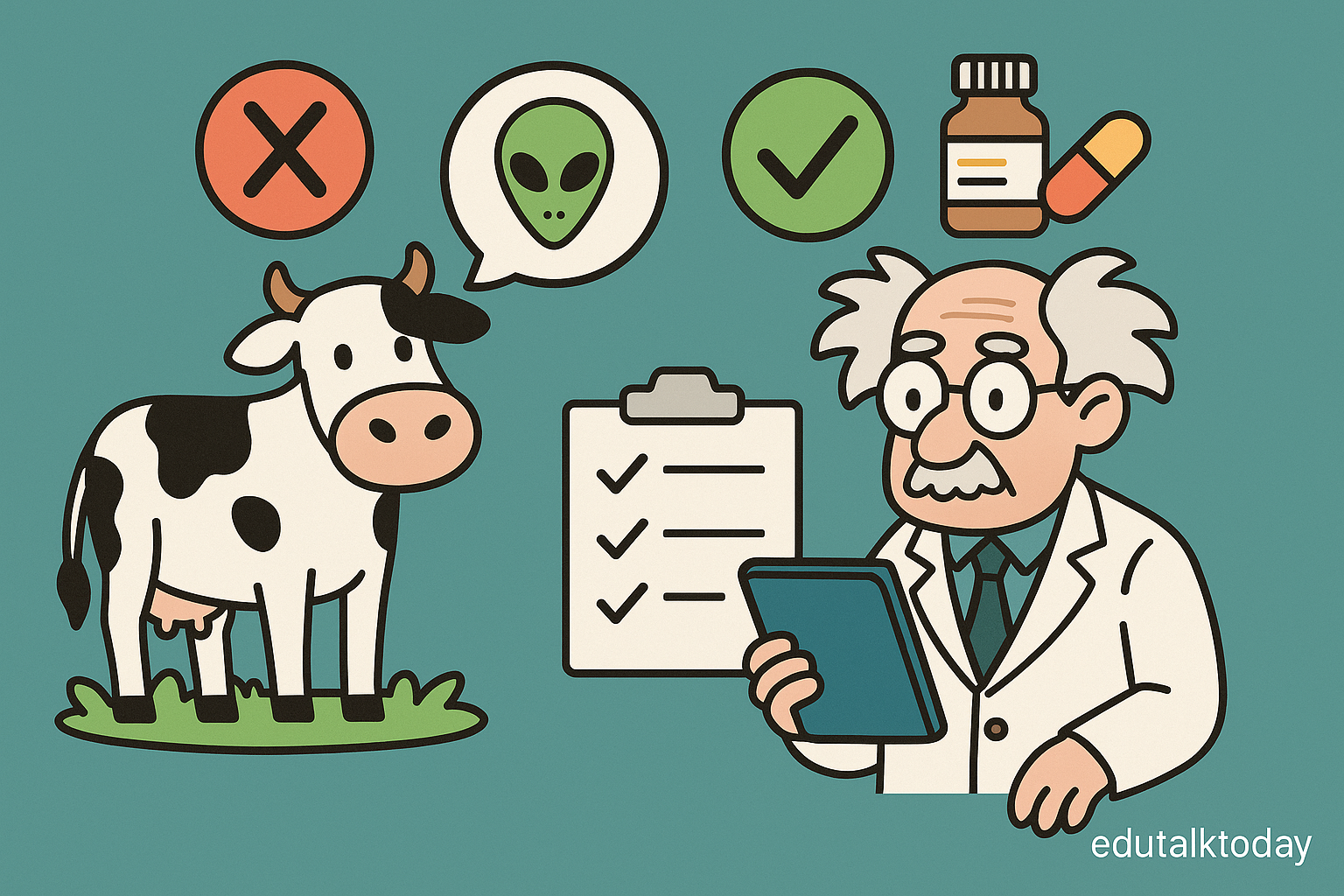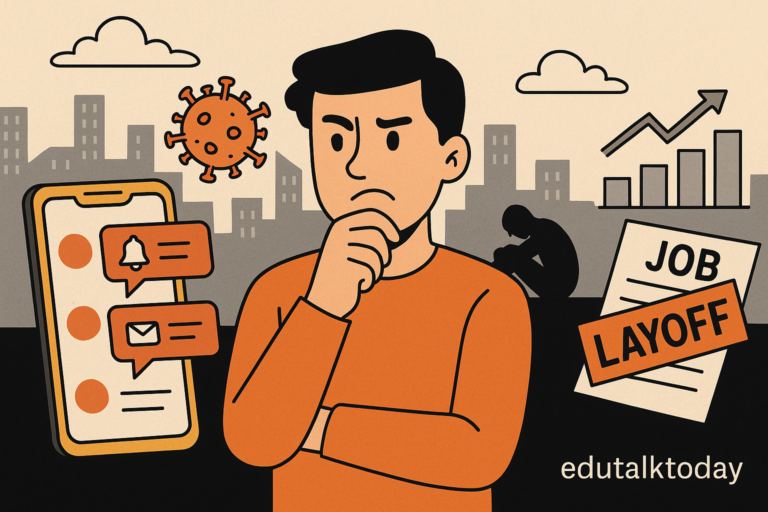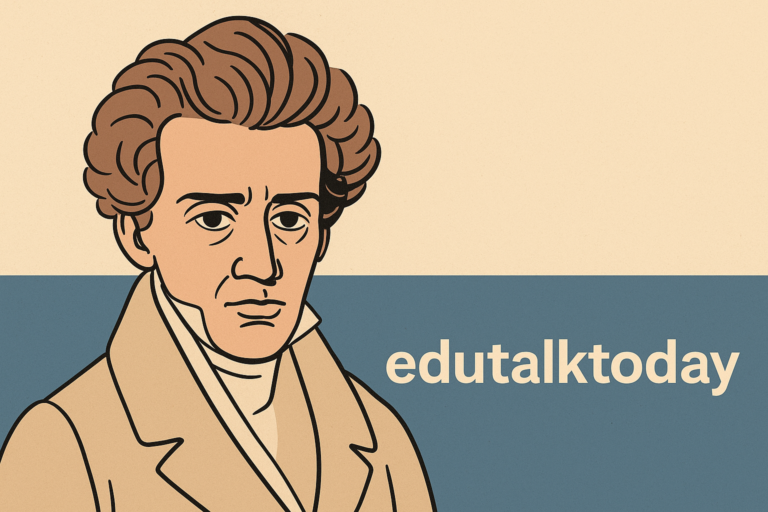Falsifiability – Karl Popper’s Big Idea on What Makes Science Scientific

Most of us think we’ve got falsifiability figured out.
Popper’s idea—that a theory is scientific only if it can, in principle, be proven false—has been drilled into us from day one. And yet, I keep seeing it misused, oversimplified, or quietly sidelined in ways that tell me we might not be done with this conversation.
Falsifiability isn’t just a box to check—it’s a high-stakes commitment to putting your theory at risk. That’s the whole point.
And in this post, I want to explore what “risky” really means, why some things that look scientific aren’t, and why this matters now more than ever—especially with the rise of increasingly complex, often black-box models in everything from cosmology to machine learning.
So let’s dust off Popper, shake off the clichés, and dive into the meat of it.
What Popper Actually Wanted – Making Theories Stick Their Necks Out
Popper wasn’t trying to make things difficult for scientists. What he wanted was to make science better.
He looked around at the early 20th century—Einstein was blowing minds with relativity, but Marxism and Freudian psychoanalysis were also claiming scientific status. Something felt off.
All three had broad, sweeping theories of the world. But only one made real, concrete predictions that could fail.
And that’s what struck Popper. Relativity said: light bends near massive objects, and we’ll see this during an eclipse.
That was a risky prediction—if the data didn’t line up, the theory was dead.
Marxism and psychoanalysis, on the other hand, had a way of explaining anything after the fact. Capitalism failed? That’s part of the dialectic.
A patient rejects the idea they hate their mother?
Classic repression.
These theories weren’t sticking their necks out—they were building fortresses.
So Popper flips the usual logic. Science doesn’t grow by proving things true—it grows by surviving attempts to prove them false. That’s why he didn’t want theories that merely fit the data. He wanted theories that could be wrong in ways we can check.
But here’s the nuance people often miss: not all falsifiable theories are created equal. Let me give you two examples.
- Example A: “All cows are secretly aliens.”
This sounds testable. You could examine every cow, right? But the theory has infinite room for retreat—maybe they only reveal themselves under special conditions, or maybe you just haven’t found the right cow. You can keep moving the goalposts. It’s not risky; it’s slippery. - Example B: “This drug will cure disease X in 70% of patients under age 40 with a CRP level above 10.”
Now that’s risky. It makes a measurable, time-bound, and population-specific prediction. If it doesn’t happen in trials, the theory takes a hit. This is what Popper wanted: claims that can be nailed down—and shot down.
It’s worth emphasizing this: falsifiability isn’t a binary switch.
It’s not “is it testable, yes or no?” It’s more like a spectrum of vulnerability. The more a theory exposes itself to the possibility of being wrong, the more scientific weight it carries.
And here’s where I think it gets really interesting: when we evaluate theories based on how much they risk being wrong, we start to rethink what makes something “scientific.” Is string theory scientific?
What about multiverse theories?
What about some of these giant AI models that nobody can fully interpret?
The usual test—can you imagine a way to falsify this?—only gets us partway. The deeper question is: how much is the theory willing to risk? If your prediction could survive any outcome, it’s not really a prediction.
So let’s move forward and look at this spectrum of falsifiability. Because once you see it, you’ll start noticing how often people are sneaking low-risk theories through the door—and calling them science.
Not All Testability Is Created Equal: The Falsifiability Spectrum
Let’s get something straight: just because a claim can be falsified doesn’t mean it earns scientific credibility. That’s the biggest trap I see in debates around science communication, pseudoscience, and even within certain scientific disciplines themselves.
To get more specific, I’ve started thinking about falsifiability not as a simple on/off switch, but as a spectrum of empirical risk. The more “skin in the game” a theory has, the closer it gets to the core of what makes science valuable. So, I’ve broken it down into five levels to help illustrate how we can assess not just whether a theory is falsifiable, but how robustly it invites the risk of being proven wrong.
Level 1 – Trivial Falsifiability
These are technically falsifiable claims, but testing them tells us very little. Think of statements like:
“Some cats have stripes.”
Yes, you could disprove this by finding a universe with only solid-colored cats. But so what? It doesn’t generate novel hypotheses, nor does it challenge any models. These claims are often descriptive, not explanatory. They might be observationally true but don’t belong at the center of a scientific research program.
Level 2 – Surface Falsifiability
Now we’re dealing with claims that appear falsifiable but lack clear mechanisms or structure. Take this one:
“Crystals emit energies that reduce anxiety.”
On paper, sure—you could measure anxiety levels before and after crystal use. But how do you control for placebo? What does “emit energies” mean in measurable terms? The claim collapses under scrutiny because its core mechanisms are vague or slippery. Surface-level testability isn’t enough when the theory keeps its core assumptions safely out of reach.
Level 3 – Model-Based Falsifiability
Here’s where things get interesting. These theories are embedded within formal models that generate specific, quantifiable predictions.
“The Higgs boson will appear at ~125 GeV.”
This is bold. It was based on quantum field theory and decades of theoretical work. If the LHC had seen nothing, it would have been a crisis for the Standard Model. This is classic Popper: a falsifiable theory, tightly constrained by math, and carrying real risk.
Level 4 – Programmatic Falsifiability
Some theories live inside broader research programs and are tested piece by piece. They may not hinge on a single prediction, but the overall trajectory is test-driven.
“CRISPR-Cas9 will reduce targeted mutation errors under lab conditions X, Y, Z.”
It’s part of a developing toolset, and each iteration refines the hypothesis. This kind of falsifiability is dynamic—it matures with the science. You don’t kill the whole theory with one bad result, but you keep it grounded through repeated, risky predictions.
Level 5 – Meta-theoretical or Philosophically Problematic
Finally, we have theories that are theoretically rich but sit uncomfortably with Popperian standards. Think:
“There are infinite universes, each with different physical laws.”
Sure, this might explain why our universe looks the way it does. But what experiment could prove this wrong? If no other universe is causally connected to ours, then we’ve lost falsifiability altogether. These are speculative metaphysical frameworks, not testable scientific models—at least not yet.
This five-level scale isn’t meant to be rigid, but it’s a helpful lens. When we talk about whether something is “scientific,” we shouldn’t just ask is it testable?—we should ask, how testable?
How risky?
How precise?
That’s where the real power of Popper’s idea lives.
When Falsifiability Gets Cheated: Immunizing Tactics and Scientific Shielding
Popper wasn’t naïve. He knew science wasn’t just a clean process of theory-risk-refutation-repeat. What he didn’t account for fully—at least initially—was how clever humans are at protecting their favorite theories from falsification without appearing unscientific.
This is where Imre Lakatos enters the picture, and frankly, we don’t talk about him enough. Lakatos argued that scientists don’t abandon theories the moment data doesn’t fit.
Instead, they construct protective belts—auxiliary hypotheses and tweaks—to save the core.
Let me give you a real-world example: String theory.
At first, string theory made bold predictions about supersymmetry. No SUSY particles at the LHC? No problem—maybe they’re just heavier. Or the math needs refinement. Or we need higher energies.
That’s an immunizing strategy—it pushes falsifiability further away without discarding the framework.
Now, Lakatos would say: not all protective belts are bad. Sometimes you should preserve a theory if it’s part of a progressive research program. But when a theory keeps dodging falsification without generating new testable claims? That’s where the rot sets in.
Three Common Immunizing Tactics to Watch For:
- Ad hoc modifiers – A new particle, force, or condition is added purely to save the theory.
- Redefining terms post hoc – When an experimental result contradicts the theory, the meaning of a term is shifted to preserve alignment.
- Infinite delay tactics – “We just haven’t tested it in the right conditions yet.” Okay… but if no test can refute it today or tomorrow, what are we doing?
What worries me is how much of this is creeping into AI, cosmology, and even some parts of evolutionary psychology.
I’ve read theories that explain any behavior—from altruism to genocide—as “adaptive” after the fact. That’s not science. That’s retrospective storytelling.
So Popper’s falsifiability, while foundational, needs Lakatos’ realism to stay sharp.
We have to ask: Is this theory sticking its neck out, or is it just good at ducking?
Real Examples of When Predictions Matter (and When They Don’t)
Let’s get hands-on. Here are a few side-by-side examples of theories or claims that look scientific at first glance, but fall apart when you ask the Popperian question: what prediction would actually kill this?
Example 1: “All cows are aliens in disguise.”
- Sounds testable—but it’s not. There’s no defined mechanism for the disguise, and the fallback explanations (“the alien tech is undetectable”) make it immune to refutation.
- Scientific score: 0/10. Falsifiable in theory, not in practice.
Example 2: “General Relativity predicts the precession of Mercury’s orbit.”
- That was a killer prediction. Newton couldn’t explain it, Einstein could. If observation didn’t match, relativity would’ve taken a hit.
- Scientific score: 10/10. Bold, risky, decisive.
Example 3: “This AI model predicts sepsis onset within 4 hours at 70% accuracy.”
- Highly falsifiable. You can run real-world data and measure performance. But the interpretation can get tricky—what if it performs well but no one understands how?
- Scientific score: 7.5/10. Good risk exposure, but black-box opacity makes mechanism murky.
Example 4: “Human behavior aligns with planetary movements.”
- Astrology isn’t dead because it failed; it’s dead because it can’t fail. When you’re using vague, metaphorical language (“Mercury in retrograde causes confusion”), you can explain anything.
- Scientific score: 1/10. It pretends to be falsifiable but isn’t built to withstand failure.
What we need to watch for is low-risk theories hiding behind scientific language. Especially in big-budget fields. If the prediction space is too wide, the theory never has to say, “I was wrong.”
This is why real science involves vulnerability.
It’s not about always being right—it’s about being willing to be proven wrong.
Final Thoughts
Falsifiability isn’t just Popper’s old checkbox—it’s a living, breathing challenge for every scientific claim. In a world where models are getting more complex, and explanations more seductive, the ability to be wrong is still the best test we’ve got.
So next time someone says, “Well, it’s falsifiable,” dig deeper. Ask: How? When?
At what cost?
Science doesn’t just flirt with failure. It depends on it.





